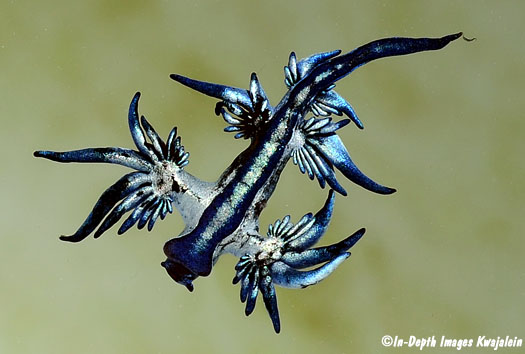
Several specimens of Glaucus atlanticus have been found washed ashore on windward beaches of Kwajalein and Enewetak Atolls. This nudibranch has an internal air bladder that causes the animal to float upside down on the ocean's surface. In the pictures from above, the two dark lines running the length of the body are the sides of the foot. It almost looks like the animal is crawling on the undersurface of the air-water interface. What it does up there is eat floating siphonophores such as the Portuguese Man-o-War, Physalia utriculus. Like many other eolids, Glaucus keeps the undigested nematocysts (stinging cells) from Physalia and stores them at the tips of its own wing-like cerata. Studies have indicated that the nudibranch's physiology somehow manages to sort out and select the largest and most potent nematocysts, so it is capable of giving at least as strong a sting as its man-o-war prey. The first few specimens below were part of a group of floaters that washed in on Kwajalein's swimming beach during some prolonged west winds. They were returned to the water for these photographs and set back adrift in an area where they would not run into land for a while. Glaucus atlanticus was first reported in the Marshalls from Enewetak and Kwajalein Atolls by Johnson & Boucher (1984).

The one below appears to have a string of eggs coming out of its reproductive opening.
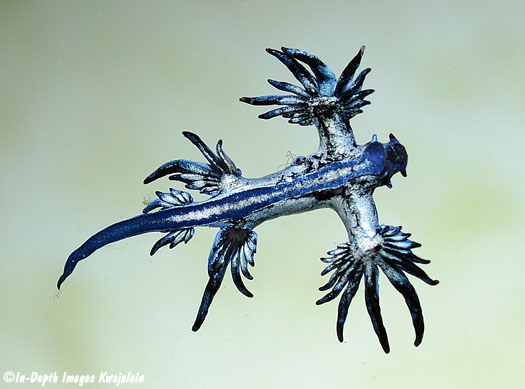
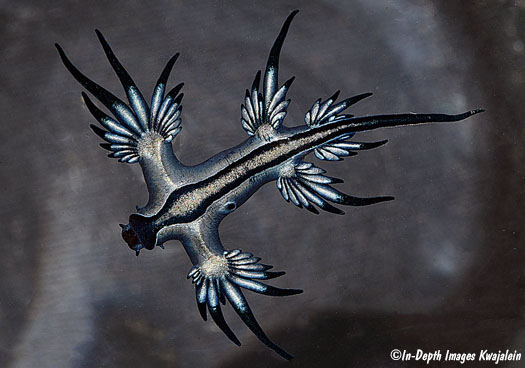
Here are a couple of the Portuguese Man-o-War that drifted in with the Glaucus. The coiled blue tentacles contain the powerful stinging cells.
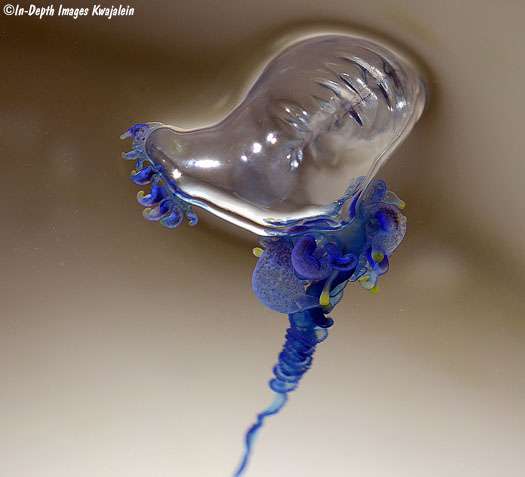
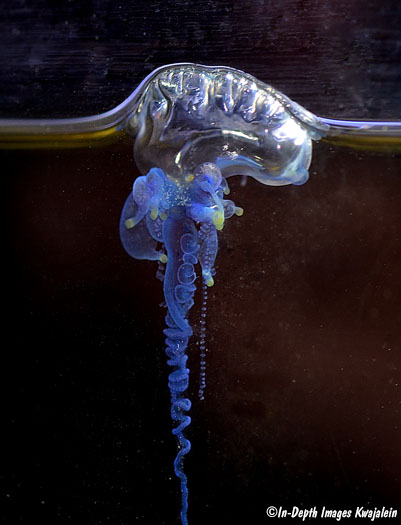
The photos below are all of specimens from Hawaii.
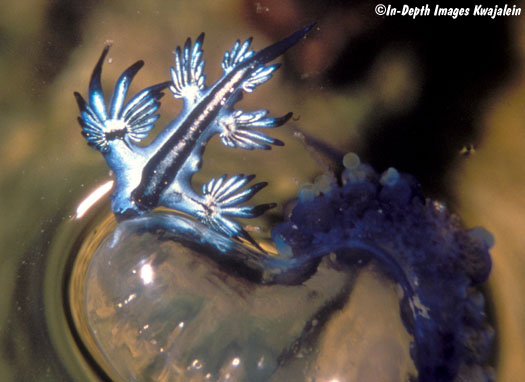
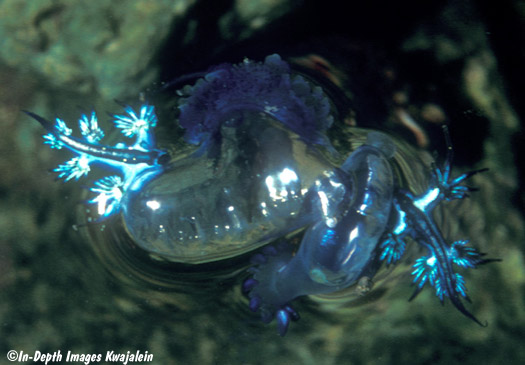
This is more the way you usually see them, washed in on the beach. The one below is still in a few millimeters of water in a shallow beach tide pool.
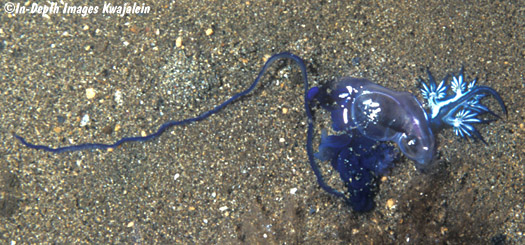
Created 8 January 2007
Updated 17 February 2021